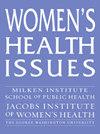美国和国外出生的墨西哥裔妇女性健康和生殖健康服务的安全网诊所使用情况。
IF 2.5
2区 医学
Q2 PUBLIC, ENVIRONMENTAL & OCCUPATIONAL HEALTH
引用次数: 0
摘要
目的:我们描述了生活在美国的美国和外国出生的墨西哥裔妇女在安全网诊所(第十条和其他公共资助的卫生保健组织)和私人卫生保健机构使用性健康和生殖健康(SRH)服务的情况。我们还测试了出生是否与SRH护理来源有关,并对其他因素进行了调整。数据来源和研究背景:我们汇集了2011-2013年、2013-2015年、2015-2017年和2017-2019年四波全国家庭增长调查(NSFG),并将在过去12个月内接受过性健康生殖健康服务的女性纳入我们的样本。研究设计:我们比较了美国出生和外国出生的墨西哥裔妇女的生殖健康服务利用率和来源(安全网诊所[第十条和非第十条公共]与私人)。我们使用多变量回归来检验出生是否与护理来源有关。主要发现:我们的样本包括n = 1,923 (n = 4,446,577)名年龄在15-44岁的墨西哥裔女性,其中42.9%是外国出生的。外国出生的墨西哥裔妇女更有可能没有保险(43.8% vs.美国出生的13.4%),与墨西哥裔美国妇女相比,使用安全网诊所获得预防性性健康生殖健康服务的调整概率显着更高(42.2%;95% CI[35.5, 48.9%]对27.6%;95% ci[22.9, 32.2%])。结论:安全网诊所,如Title X和其他公共资助的卫生保健组织,在获得居住在美国的墨西哥裔妇女,特别是外国出生的妇女的预防性性健康和生殖健康保健方面发挥了重要作用。本文章由计算机程序翻译,如有差异,请以英文原文为准。
Safety Net Clinic Utilization for Sexual and Reproductive Health Services Among U.S.- and Foreign-Born Mexican-Origin Women
Objective
We describe utilization of sexual and reproductive health (SRH) services at safety net clinics (Title X and other publicly funded health care organizations) and private health care settings among U.S.- and foreign-born Mexican-origin women living in the United States. We also test whether nativity is associated with source of SRH care, adjusting for other factors.
Data Sources and Study Setting
We pooled four waves of the National Survey of Family Growth (NSFG)—2011–2013, 2013–2015, 2015–2017, and 2017–2019—and included in our sample women who received SRH services in the previous 12 months.
Study Design
We compared SRH service utilization and source (safety net clinics [Title X and non-Title X public] vs. private) between U.S.-born and foreign-born Mexican-origin women. We used multivariable regression to test whether nativity was associated with source of care.
Principal Findings
Our sample included n = 1,923 (N = 4,446,577) Mexican-origin women aged 15–44, 42.9% of whom were foreign born. Foreign-born women of Mexican origin were more likely to be uninsured (43.8% vs. 13.4% among the U.S. born) and had a significantly higher adjusted probability of using safety net clinics to access preventive SRH services compared with Mexican-American women (42.2%; 95% CI [35.5, 48.9%] vs. 27.6%; 95% CI [22.9, 32.2%]).
Conclusions
Safety net clinics such as Title X and other publicly funded health care organizations play an important role in access to preventive SRH care among Mexican-origin women living in the United States, especially for foreign-born women.
求助全文
通过发布文献求助,成功后即可免费获取论文全文。
去求助
来源期刊

Womens Health Issues
Multiple-
CiteScore
4.50
自引率
6.20%
发文量
97
审稿时长
32 days
期刊介绍:
Women"s Health Issues (WHI) is a peer-reviewed, bimonthly, multidisciplinary journal that publishes research and review manuscripts related to women"s health care and policy. As the official journal of the Jacobs Institute of Women"s Health, it is dedicated to improving the health and health care of all women throughout the lifespan and in diverse communities. The journal seeks to inform health services researchers, health care and public health professionals, social scientists, policymakers, and others concerned with women"s health.
 求助内容:
求助内容: 应助结果提醒方式:
应助结果提醒方式:


